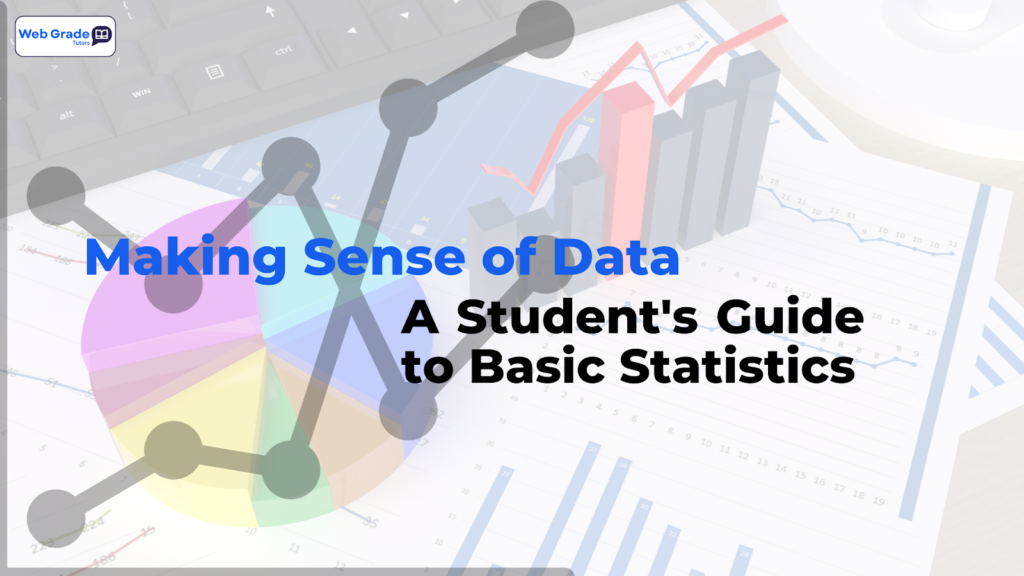Visit our website
Explore content tailored to your curriculum and country—from foundational skills to exam prep.
Explore ContentPlease add some widget in Offcanvs Sidebar
Explore articles on exam prep, time-management hacks, study resources, and global curriculum updates. .
Whether it’s O/A Levels, State Boards, or International exams, our blog keeps you ready and informed.

The truth? Statistics isn’t just about tests—it’s about life. From weather predictions to sports results, from exam grading to medical research, statistics help us make sense of data. In this guide, we’ll break down the main topics of statistics in a simple, step-by-step way, with real-life examples and short practice drills you can try at home.
By the end, you’ll understand the basics—and see how private tutoring can make statistics feel less scary and more manageable.
But here’s the good news: With real-world examples, step-by-step explanations, and guided practice, statistics becomes surprisingly simple.
The foundational ideas for gathering, classifying, evaluating, and interpreting data make up statistics’ building blocks. Generally speaking, the field is divided into two primary subfields: inferential statistics, which makes inferences from data, and descriptive statistics, which summarizes data.
Population: The total set of people or things that are the subject of a study. Any group, like “all atoms in a crystal” or “all students in a school,” can be included.
Sample: A portion of the population that is actually used to gather data. To draw reliable conclusions about the broader population, a representative sample is necessary.
A variable is a feature or quality of a person, thing, or occasion that is quantifiable or countable.
A parameter is a numerical value that describes a characteristic of the entire population.
Statistics: A numerical value that describes a characteristic of a sample. It is used to estimate the population parameter.
Real-life example: If three students scored 70, 75, and 100 on a test:
Fun analogy: Imagine student scores as students sitting in a row. If they’re sitting tightly together → low SD. If they’re far apart → high SD.
Tip: Visualization makes data feel alive.
Normal distribution: The famous bell curve. Many test scores and heights follow this pattern.
Central Limit Theorem: Even if the population isn’t normal, averages from samples tend to form a bell curve.
Hypothesis Testing: Making decisions with data. Example: “Does studying 30 minutes more each day really improve scores?”
p-value: Probability that results happened by chance.
Confidence Intervals: Range of values where the true answer likely lies.
Take 5 test scores from your last exam (real or made-up).
Create a quick bar chart of your family’s favorite meals. Which one is the mode?
Roll a die 20 times. Record how many times each number appears. Compare results with the “theoretical probability” (should be about 1/6 each).
At WebGrade Tutors, we’ve seen students go from “I hate statistics” to “This is actually fun!” within weeks.
Book a free trial lesson today and see how your child can thrive in statistics.
At WebGradeTutors, we provide expert tutoring in a wide range of subjects, including math, physics, biology, chemistry, English Language Arts (ELA), and more. We also specialize in test preparation for SAT, ACT, GCSE, A-Level, Key Stages 1-3, and other standardized exams. Whether you're in K-12 or preparing for college, we’ve got you covered!
We understand that every student learns differently. After assessing your strengths, weaknesses, and learning style, we create a customized learning plan tailored to your needs. Our tutors adapt their teaching methods to ensure you understand the material, whether it’s solving complex math problems, mastering physics concepts, or improving your ELA skills.
Our tutors are highly qualified professionals with expertise in their respective subjects. They have strong academic backgrounds and experience working with students of all ages and skill levels, from K-12 to A-Level and beyond. Many of our tutors hold advanced degrees and are passionate about helping students succeed in math, science, ELA, and test preparation.
Absolutely! At WebGradeTutors, we match you with a tutor who specializes in your subject area and understands your unique learning needs. Whether you need help with GCSE math, A-Level physics, SAT/ACT prep, or ELA, we’ll connect you with the best tutor for your goals.
Your satisfaction is our priority. If you’re not happy with your sessions, we’ll work with you to adjust your learning plan or pair you with a different tutor. At WebGradeTutors, we’re committed to helping you achieve your academic success, whether it’s acing your GCSEs, improving your SAT/ACT scores, or mastering chemistry concepts.
Explore country-specific content, try a free 60-minute class, and join thousands of learners growing with WebGrade Tutors.
Explore content tailored to your curriculum and country—from foundational skills to exam prep.
Explore ContentConnect with an expert tutor, experience our teaching style, and get a custom plan for success.
Book Free TrialAsk questions, get help, and grow your skills with students, parents, and tutors just like you.
Join NowHave a inquiry or some feedback for us? Fill out the form
below to contact our team.
Contact us today, and our team will be happy to help with any inquiries or support you need.
Call us any time:
(+61) 480 008 636Email us 24/7 hours:
info@webgradetutors.comOur location:
85 Great Portland St